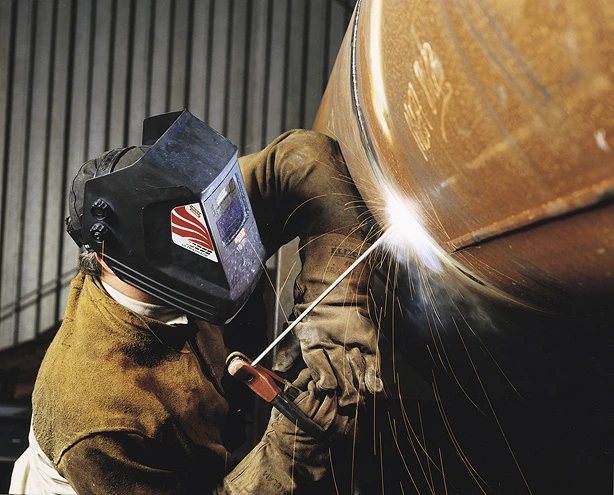Exactly how to Develop a Reliable Welding WPS: Tips and Finest Practices
Exactly how to Develop a Reliable Welding WPS: Tips and Finest Practices
Blog Article
Grasping Welding WPS Requirements: Best Practices and Techniques for High Quality Welds
In the realm of welding, understanding Welding Procedure Specification (WPS) criteria is an important element that straight influences the top quality and honesty of welds. Sticking to these criteria makes certain consistency and integrity in welding outcomes. Nonetheless, accomplishing quality in welds goes beyond just understanding the requirements; it involves executing finest techniques and methods that raise the craft to a level of accuracy and skill that sets apart the standard from the phenomenal. As we browse via the ins and outs of welding WPS requirements, revealing crucial understandings and strategies for attaining top-tier welds will certainly be critical for welders seeking to succeed in their craft and produce welds that stand the examination of time.
Comprehending Welding WPS Specifications

Inspectors count on WPS documents to validate that welding treatments are being followed properly and that the resulting welds are of high quality. Designers utilize WPS criteria to design welding procedures that make certain the sturdiness and integrity of welded frameworks.


Crucial Tools for High Quality Welds
Mastering welding WPS criteria is important for welders to properly use the essential devices required for generating top quality welds. Among one of the most essential devices for high quality welds is a welding equipment. The kind of welding maker required depends on the welding process being made use of, such as MIG, TIG, or stick welding. Welding helmets are additionally indispensable to secure the welder's eyes and face from sparks, heat, and UV radiation. Additionally, welding gloves constructed from heat-resistant and long lasting materials guard the hands from burns and injuries. Clamps and magnets help hold the work surfaces with each other firmly throughout the welding process, ensuring precise and accurate welds. Wire brushes and damaging hammers are necessary for cleansing the weld joint prior to and after welding to eliminate any pollutants that might influence the high quality of the weld. Lastly, a measuring tape and angle mill are helpful devices for making sure proper alignment and preparing the workpieces for welding.
Trick Techniques for Welding Success
To accomplish welding success, one must understand the key strategies crucial for creating high-quality welds. One crucial method is maintaining the right arc size. Maintaining the electrode at the optimal distance from the work surface is essential for producing strong, uniform welds. Furthermore, controlling the travel speed is extremely important. Moving as well rapidly can cause insufficient infiltration, while moving too slowly can bring about extreme heat input and prospective problems. Appropriate adjustment of the electrode angle is an additional vital method. The angle at which the electrode is held can affect the grain form and penetration of the weld. Moreover, ensuring regular gun angle and direction of travel is essential for uniformity in the weld grain. Finally, keeping a stable welding and a steady hand setting throughout the procedure is vital to attaining precision and uniformity in the welds. By grasping these essential techniques, welders can raise the top quality of their job and accomplish welding success.
Ensuring Conformity With WPS Standards

Moreover, welders must go through training to familiarize themselves with the WPS requirements appropriate to their work. Regular audits and examinations need to be carried out to validate that welding tasks straighten with the recommended WPS standards. In addition, keeping in-depth documents of welding parameters, devices calibration, and examination results is critical for showing conformity with WPS criteria - welding WPS. By vigilantly adhering to WPS requirements, welders can ensure that their job meets the needed top quality levels and contributes to the general success of the welding job.
Troubleshooting Common Welding Issues
When confronted with typical welding issues, determining the origin is important for effective troubleshooting. One common issue is the visibility of porosity in welds, typically triggered by contaminants such as oil, wetness, or go now rust. To resolve this, ensuring appropriate cleaning of the base metal before welding and utilizing the appropriate protecting gas can substantially decrease porosity. An additional problem regularly experienced is absence of blend, where the weld stops working to effectively bond with the base material. This can stem from inadequate warmth input or inappropriate welding strategy. Adjusting parameters such as voltage, cable feed rate, or travel speed can aid improve fusion. In addition, distortion, breaking, and spatter are usual welding obstacles that can be minimized with proper joint preparation, consistent heat control, and picking the ideal welding consumables. By thoroughly understanding these usual welding concerns and their origin causes, welders can effectively repair problems and achieve top notch welds.
Conclusion
Finally, understanding welding WPS requirements requires a thorough understanding of the standards, making use of vital devices, and executing essential strategies for effective check my blog welds. Making sure conformity with WPS standards is vital for generating top quality welds and preventing common click this site welding concerns. By complying with best methods and practices, welders can attain trustworthy and constant cause their welding jobs.
In the realm of welding, grasping Welding Procedure Specification (WPS) standards is an important part that directly influences the high quality and integrity of welds.When delving right into the world of welding techniques, a vital facet to comprehend is the importance and ins and outs of Welding Treatment Requirements (WPS) standards. WPS criteria offer a comprehensive standard for welding operations, ensuring uniformity, top quality, and safety and security in the welding procedure. The type of welding machine required depends on the welding procedure being used, such as MIG, TIG, or stick welding.Accomplishing welding success through the mastery of vital methods necessitates a thorough understanding and adherence to Welding Treatment Requirements (WPS) criteria.
Report this page